Pomerol Plaudits: Bordeaux 2017 from barrel
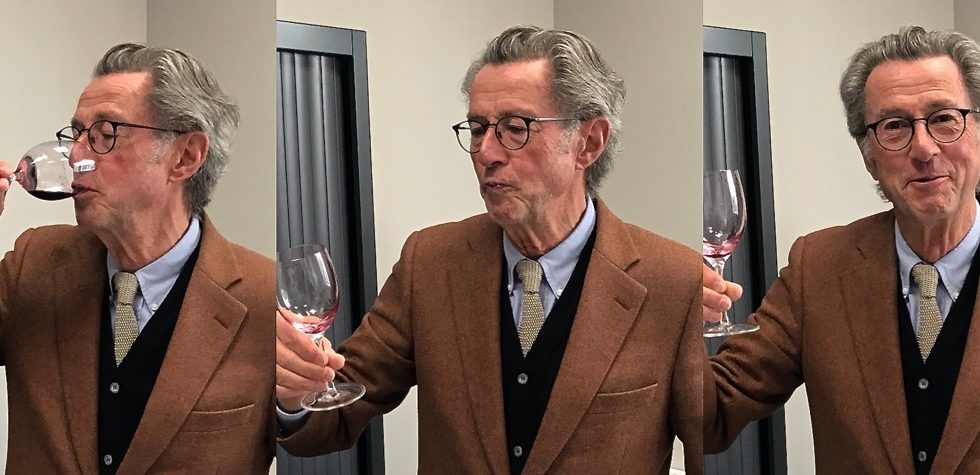
The small Bordeaux appellation with many 2017 hits
By Panos Kakaviatos for wine-chronicles.com
2 May 2018
As almost anywhere in Bordeaux, the best terroirs thrived, especially those with either minimal or no frost. Pomerol in spite of its rather small size, is no exception.
As you can see in the photo, Christian Moueix of the Ets Jean-Pierre Moueix wine company, known for crafting excellent Pomerols at various price points, looks happy about 2017, in spite of frost challenges. In his office, he spoke at length about the need for “bougies” (large candles) in late April, to fight against frost in some vineyards, as well as special fans to deter frost.
Indeed, many estates from this rather small but super famous Bordeaux appellation lost many vines to the frost. Château Taillefer lost 60% of its potential harvest. Château Mazeyres? 75%! But even these estates worked to make wines that ranged from pretty good to excellent. From Moueix properties to Château Evangile, for example, which lost 50% of its potential harvest to frost, and yet made one of the top wines of the vintage.
But other estates in Pomerol, such as Beauregard, Vieux Château Certan, La Conseillante and l’Eglise Clinet had little or no concern about the frost. Guillaume Thienpont of Vieux Château Certan said over our tasting: “The only candle I lit was at church.”
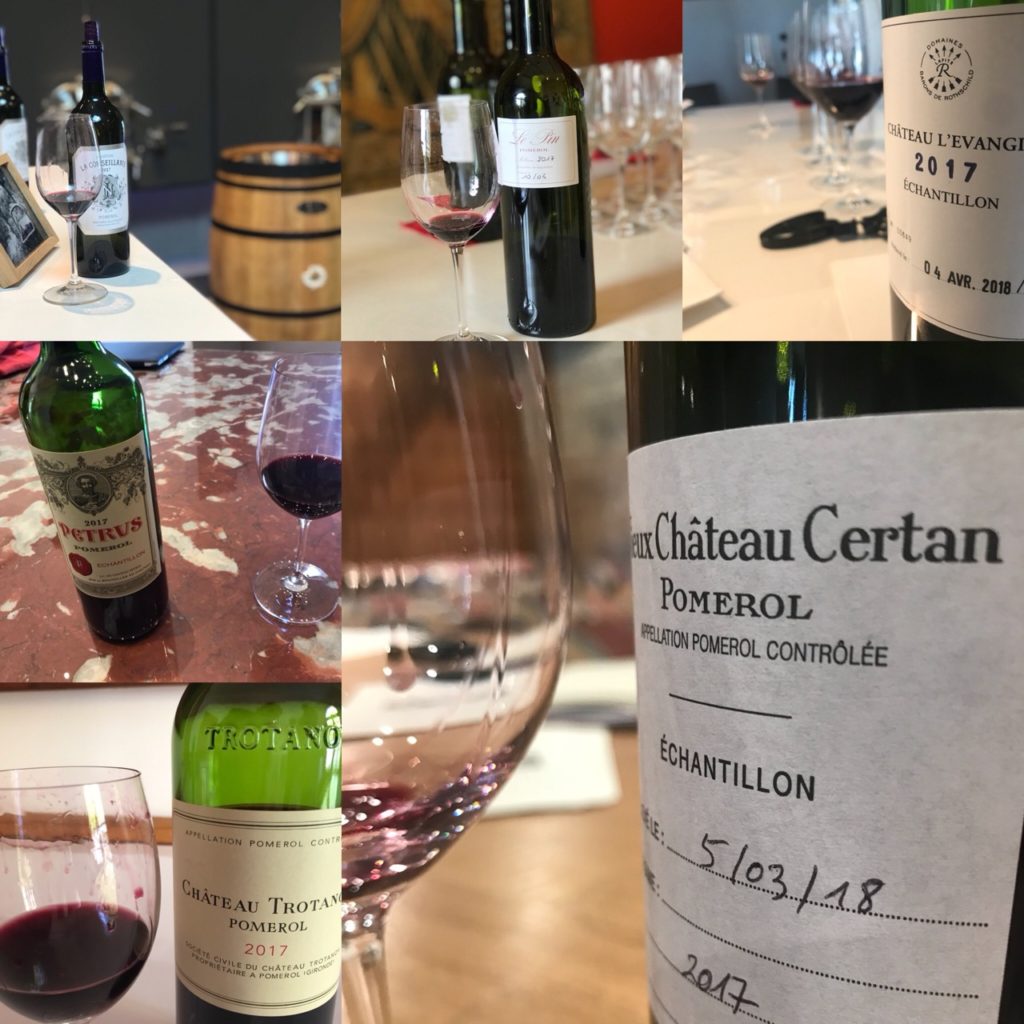
Dear reader, the “curse” of recent vintages ending in “7” for Bordeaux ends with 2017, which includes some truly great wines, many in Pomerol, illustrated above.
So, in Pomerol, you can find wines with somewhat hard tannins, and occasionally uninspiring finishes. Some wines seemed just a bit thin on the mid palate, too, but many others reached such heights as to match a truly great vintage.
Indeed, in a vintage known more for moderate alcohol levels, in Pomerol you can find several wines well above 14% – and they are excellent and balanced. Indeed, the best wines from this appellation count among the very best red Bordeaux has to offer from barrel in 2017, period.
And that can be 2017 in a nutshell: a very heterogeneous vintage that needs time to examine. It is in many ways more interesting to assess than, say, 2016, where the wines were more uniformly good to great. Of course 2016 is a superior vintage, overall, but 2017 was more fascinating to discover and includes some wines that can match 2016 quality, if not style. For my general impression of Bordeaux 2017, click this link.
One other note: Not all the successful Pomerols are very expensive, although all the great ones are.
Tasting Notes: Recall, dear reader, that these are but barrel samples and samples can vary! Certainly tasters vary. ?
As usual, if in bold, I liked in particular. If red and bold, even more. When underlined, too, a potential wine nirvana.
Château Beauregard – Being on the plateau, the wine did not suffer very much from late April frost. This blend of 60% Merlot and 40% Cabernet Franc exuded a rather low acidity typical of the vintage (pH being 3.8) and 3 grams of acidity per liter. Aged in 50% new oak, clocking in at 13% alcohol, one barrel sample comes across smooth and medium bodied. There are some somewhat steely tannins, but barrel aging will reveal the wine’s charm. It is just a bit tight at this stage, but neither austere nor drying. After re-tasting other Pomerols, this one counts among fresher examples. At Pomerol Seduction, they also had a 2015 vintage and the comparison (of course not really fair) just showed how much riper and more opulent the 2015 can be. At the negociant Joanne, more positive feedback: “Racy and juicy albeit a touch drying on the finish. But, overall: refined and rather racy Pomerol. 91-93
Château Le Bon Pasteur – Tasted twice with similar results. At the UGCB, I like the ripe tannin and mid palate richness, but it seems to dry up, just a bit, on the finish, marked by evident oak derivation. And at the negociant Joanne: “Espresso and dark chocolate, but the fruit is not as present as it should be.” Let us wait and see from bottle. 88-90

As ever, the tasting organized by the Grand Cercle association of Bordeaux wines was superb: great service, stemware and tasting temperatures. Many Pomerols tasted here among loads of other appellations.
Château Bourgneuf – Although I like the cool blue fruit nose, the palate is a bit one-dimensional. A strong tannic “strike” but without much nuance. There is power, but the tannins seem a bit edgy as compared to, say, the superior Château La Grave. Tasted twice and the second time reveals more plum ripeness, but also steely tannins: it will need time to resolve in bottle. Smoothness should arrive however, as the tannins are not too hard. Indeed, as you go back to it, it gets better on the palate. 89-91+
Château La Cabanne – This is estate is getting better, although the 2017 is not nearly as interesting as the 2015, for example, recently tasted from bottle during the UGCB tour in the United States this past January. Gone are any flagrant vegetal notes, to be sure, but it is not particularly super ripe in 2017, either. 87-89
Château Certan de May – Has a robust nose, a bit of oak, quite vivid fruit and floral aspects, but the palate feel has some edgy tannin and neither as soft nor as subtle as the Latour à Pomerol, tasted just before, with a somewhat shorter than expected finish. Still these tannins will soften. 90-92
Château La Clémence – A wine marked by austere tannin. The finish does not dry out, but a tight impression remains. There is sap however, on the mid palate, so I am sure that with time in bottle it will be fine, and I like the wine’s grip and substance. To be revisited! 88-90
Château Clinet – Just eight percent Cabernet Sauvignon and the rest Merlot, I enjoyed the rather floral notes on the nose, although it was somewhat tight on the palate. More linear than broad on the palate: I like the tension, the good energy. Aging in 70% new oak. At the UGCB, a “smooth delivery” and “pleasing” if just a bit impersonal, a tad steely. Given the energy of the palate, I would think that this will end up being pretty darn good as the tannins soften with age. I know that other critics love this but based on sample I tried, I will stick to a conservative point range for now: 90-92
Clos de la Vieille Eglise – Oak aspect on the nose. Some sweetness. Somewhat drying aspects, too. It is just OK. 86-88
Château La Conseillante – A wine of haute couture to be sure, and it succeeds in 2017. Although the late April frost only struck “the fringes” of the estate’s 12 hectares, careful selecting was made to avoid any second generation grapes from vines that had been damaged. The 100m of rain in the last week of June required some de-leafing to ventilate the vines so as to avoid any spread of grey rot. By the end of August, even though summer was not particularly sunny (but it was dry!), the grapes showed a pH of 3.5 and a potential alcohol of 13.5% with 80% ripeness of the pips, which was actually higher than at the same stage in 2016! The rains of September complicated matters but management of this excellent estate alternated between showery periods to allow vines to re-concentrate the grapes. Using a Densilys sorting device, the estate was able to discard any less ripe grapes that may have come from frost struck vines. It was fascinating to taste wines selected from different lots before the final blend, so we were able to assess for example Merlots from more gravely plots that were particularly juicy and ripe, with 14% alcohol. This constituted 50% of the final blend. Then we tried Merlots from more predominantly clay soils, where the nose was indeed “cooler” and actually deeper and more powerful, even if somewhat lower in alcohol at 13.5% This particular lot resembled Petrus the most and makes up 35% of the blend. Finally, we tried Cabernet Franc, 15% of the blend, which contributes to the linearity and brightness of the vintage, with notes of lingonberry and floral aromas.
And the final blend? What a lovely La Conseillante wine it is in 2017: a polished nose combining those floral elements with bright ripe fruit, a palate that has depth and subtle power, perhaps somewhat reserved, but with density and juiciness. A top wine from 2017, clocking in at 13.6% alcohol, and aging in 70% new oak. Bravo! 94-96
Clos du Clocher – Both rich and focused with a medium bodied palate exuding ripe fruit, this blend of 70% Merlot and 30% Cabernet Franc. It does lose some lift on the finish however, as the acidity seems noticeably low. Overall, this is tasty. 90-92
Château La Commanderie – Oak notes on the nose, rather clearly so. Tannins are too oak-derived and bury the fruit. Not really confident with this one … 85-87
Château La Croix de Gay – Juicier than the Clinet, tasted just before at the UGCB event. This has some ripe fruit and fun as well: a certain degree of depth and a more memorable finish. A rather successful wine that resembles the charm and juiciness of a 1985 vintage… 91-93+
Château l’Eglise Clinet – The aromatics are both classy and opulent: much ripe black fruit and floral perfume, albeit with some spicy oak derivation that is a smidgen too noticeable for my taste. Still, this comes as another example of a top 2017 that should convince doubters who see (yet another) middling -7 vintage in Bordeaux: You can find great wines that rival 2016 or 2015… Another advantage here was no frost, so one major concern is gone. The Merlots were picked between 12-22 September, and the Cabernet Francs on that final date of September. We get into subjective tastes here, so my only quibble is that the (70%) new oak – the same amount of new oak at La Conseillante – is too present in this wine, and thus I score it a few notches below some of the other grand Pomerols. The alcohol clocks in at 14.3% 93-95
Château Evangile – “This is our best -7 since 1947,” quipped director Jean Pascal Vazart and who am I to argue? The estate lost about half of their potential harvest to late April frost, but his team carried out meticulous work in the vineyard lasting no less than 45 days to avoid picking any second-generation grapes during the harvest. Even in sectors that were not hit by frost, there were some parts of vines that were partly affected, so they marked vines that were either affected by frost, partially affected by frost or not affected at all. Here an example of an estate that handled the frost issues with flying colors! This has 100% new oak, but do you sense it? Not at all. What you sense is gorgeous balance and one of the best wines of 2017. Sure the pH is a lofty 3.9 but such opulence and density and impressive dry extract will structure this wine very well for your cellar, and there is freshness, too, a hallmark of the vintage and the alcohol clocks in at 14.6%! A vintage that started precocious, but then July and August slowed down the precocity. So harvest started normally, in fact, and grapes were very ripe indeed, but not heavy or over-ripe and in spite of the low to moderate acidities, there is balance and freshness. Bravo! 94-96
Château Feytit Clinet – Spicy aromatics on the nose, some oak derived cinnamon perhaps? Good sap and opulence however on the mid palate. While some wines seemed just a bit thin on the mid palate, no problems with that here! Pretty nice work! 90-92
Château La Fleur Petrus – Herbal, floral, fruit rather intriguing nose, the palate shows power, much more than – say – the Latour à Pomerol. The latter may seem more “cohesive” as this early stage, and this wine has tannic edginess that annoys just a bit on the finish. Yet, there is – as fellow taster Miguel Lecuona says – “more going on here” and barrel aging will likely yield a wine of character (more than the Latour à Pomerol has). 92-94+
Château Gazin – Quite floral in aspect, and with fine palate density, this blend of 95% Merlot and the rest Cabernet Franc is aging in 40% new oak. Tasted earlier at the UGCB with other Pomerols, it seems a tad austere, just a tad hard. Maybe not the most opulent, but it has interest. I like the fruit, and there is no sense of over extraction to be sure. I just tasted somewhat muted samples. Not the best Gazin I have had from barrel, but for the vintage, a pretty darn good wine. My score is a tad conservative – let us see how it does from bottle! 90-92+
Château Le Gay – For the price, it comes across as a bit too drying as well… I am not sure about this. Raw power, sure, but where is the Pomerol sumptuousness (and finesse)? Only tasted once. 87-89
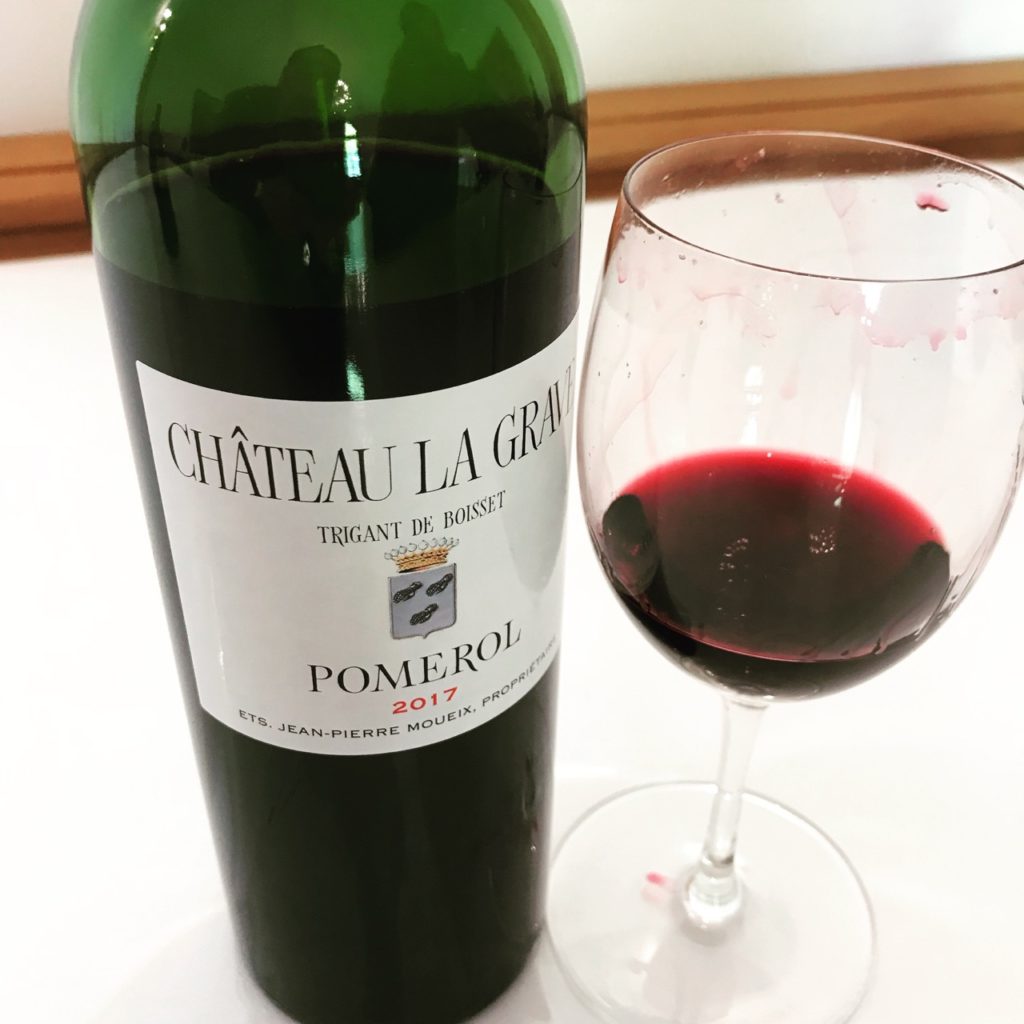
No, you do not need to spend loads of cash for high quality Pomerol in 2017 and this is a good example.
Château La Grave – Lovely balance, sap and fruit. For the price point, you cannot go wrong. I prefer it to Lafleur-Gazin, as it conveys that wine’s soft elegance, but with more substance and mid palate juice – and you get a longer finish. Like a 2001. A strong buy recommendation! 90-93
Château Hosanna – This has fine juiciness: already on the nose you sense an embracing sap. Follows through on the palate, with just enough salinity to keep in fresh as well as opulent. It seems a bit shorter on the finish than expected from the attack and mid palate, but a wine that should be rather grand after barrel aging. 92-94+
Château Lafleur – Gorgeous floral notes as well as Pauillac like graphite combine with ripe plum and blackberry all encased in one of densest palates of 2017. This is serious wine. Cellar master Omri Ram insisted that “a certain journalist” who called the 2017 vintage “oceanic” got it all wrong. Well, here we go with the many faces of 2017. At Lafleur, this is a great vintage. Why? The estate’s team battled frost successfully using the large candles (bougies) in the vineyard, and then everything fell into place for “clear continuity” of 2015 and 2016 as a “great vintage”. Tasting the wine, I could not disagree. The gravel soils of Lafleur retained more heat than the more clay soils of Les Pensées, and the wine leaves you with an impression of both serious weight and sumptuousness: it pleasingly envelopes the palate as one of the most full bodied wines of 2017. The hotter soil meant earlier picking than Les Pensées, and many of the Merlots achieved optimal ripeness, and were picked before any September rainfall. The Cabernet Franc, 53% of the blend, lends needed freshness as well as backbone. Bravo! 94-97
Les Pensées de Lafleur – What a marvelous “second wine” which gets my vote as the best second wine of the vintage, and even rivals Lafleur itself. Why? The creamy aspect to the palate, the opulence, the juicy sap-driven mid palate have more immediate appeal. The cooler clay soils handled the summer dryness very well, and later picking suited this estate. It may not match the serious, almost Pauillac like grip of Lafleur, but it has such charm that you will fall in love hook line and wine sinker. 93-95
Château Lafleur Gazin – Pretty and floral and has elegance as well as subtle substance: keep in mind that barrel aging will fill it out. Some of these “lesser vintages” can be quite appealing. Does not follow through as much as one would like perhaps, as the finish comes up shorter than one would expect, but, overall, this will be a “floral joy” to drink! 90-92+
Chateau Lagrange – Tasted at the Moueix offices in Libourne, this wine exudes a frank nose with juicy ripe red fruit appeal. Also appealing for its subtle opulence expressed in a supple mid palate, and “softer toned” balance. 91-93
Château Latour à Pomerol – This is quite perfumed and subtle and fruit driven but soft; the palate has lovely balance and focus, more interesting than Château La Grave, more subtle power, even if the finish is not as long as you would like and the grip is not as interesting as with, say, La Fleur Pétrus. Does not reach the heights of a grand vintage, to be sure, but is a darn good Pomerol: let us just hope that the price will be reasonable. 91-94
Château Lecuyer – Tasted after Feytit-Clinet at the Grand Cercle tasting, and I get more austerity than is needed, even if it has substance and a certain depth. 88-90
Château Mazeyres – “The frost looked like leopard spots, with no logic to its pattern,” remarked a representative for the estate at the Pomerol Seduction tasting. Indeed, the late April frost struck cooler soils and lower elevation plots, so this estate lost a whopping 75% of its plots. Fortunately it has 25 hectares of vines and made a very good wine. The blend of 86% Merlot and 14% Cabernet Franc exuded ripe fruit, even if the tannins were on the steely side, with somewhat harder than usual aspects. Tasted before at Grand Cercle, I liked the sample there more, as it conveyed more juice and sap, albeit a bit of oak derived tannin. In the end, it comes across as rather smooth and fun to drink. Tasted at Joanne, not as positive an experience as compared to Château Taillefer, so mixed results: “Decent wine for the vintage, perhaps a bit more rustic compared to the preceding wine (Taillefer)… Let’s just give this a moderately high score, shall we, and see from bottle … 89-91+
Château Nenin – No second wine in this vintage, as the vineyard was struck by frost. The first wine – while tasty enough – seemed to lack enough Pomerol charm and opulence of better vintages. Still, you get ripe fruit and a certain medium bodied richness but it seems to lack the vigor expected from this cru. Let’s see how it does from bottle. A conservative score for now. 88-90
Petrus – One of the very best wines of the vintage, along with Château Lafite Rothschild, but no one should be surprised, given the great blue clay terroir here. Floral with fine ground chocolate notes and ripe fruit, that ends with lift and tonicity on the very long finish. The alcohol is so well integrated, and you do not feel that it clocks in at … no less than 14.7%! The 3.6 pH is similar to 2016 (3.55). “It was a strange year,” remarked director Olivier Berrouet. There was the frost at the end of April and then drought like conditions later with one-third of regular rainfall in July and August. Rain was welcome in September – about 50mm – that helped young vines that were blocked. The wine is creamy in texture, yet has excellent grip. The harvest began on 8 September and ended on the 28th of that month. One hallmark at Pétrus was the size of (very) tiny berries: only 1.1 gram for berry of grape, while the normal size is 1.5. By contrast, in 2011, it was 2 and a far bigger yield. The result really is that Pétrus has had a string of excellent vintages with 14-15-16-17. For Olivier and for those who taste it, 2017 is a great vintage at Pétrus. Sure the 2015 feels more solar and the 2016 a bit cooler, a bit more austere at first, but the 2017 has beguiling aromatics. The cooler summer ensured aromatic elegance. And the famous moisture retaining clay handled the drought very well. Candidate for wine of the vintage. 95-97+
Château Le Pin – I rarely if ever taste this wine from barrel and was expecting amazing things. Indeed, the texture of this wine counts among the silkiest of all in 2017. The hard or steely tannins that came with many other wines find their polar opposite with this wine that exudes fine and ripe red fruit freshness, and very pure in that expression, along with pristine ripe plum notes. In a word: balanced. In terms of price, I am truly not sure that I like this much more than the relatively inexpensive Vieux Château Certan, however… 94-96
Château Plince – This has more power it seems, but not as elegant or even as balanced as for example the Château Lagrange. 87-90
Château Rouget – As ever when tasting from barrel, samples vary. This wine tasted better at Pomerol Seduction than it did at the UGCB, with richness and brightness albeit a tad flabby on the finish. At the UGCB, tasted with the experienced palate of Hugo Van Landeghem, the barrel sample started out certainly fruit driven, but then we got the impression of over extraction and drying. Too bad. And again, at Joanne, I got a “drying” palate. 88-90?
Château Taillefer – Marked by a bit of austerity on the nose and palate. Juice on the mid palate of this blend of 93% Merlot and 7% Cabernet Franc saves the day to be sure. Keep in mind that this 12-hectare estate lost some 60% of the potential harvest to the late spring frost. But it lacks the éclat of a great vintage. A better tasting experience at the negociant Joanne as “tasty and robust enough” even if just a tad drying on the finish, but I am but quibbling. Overall, a solid Pomerol. 89-91+
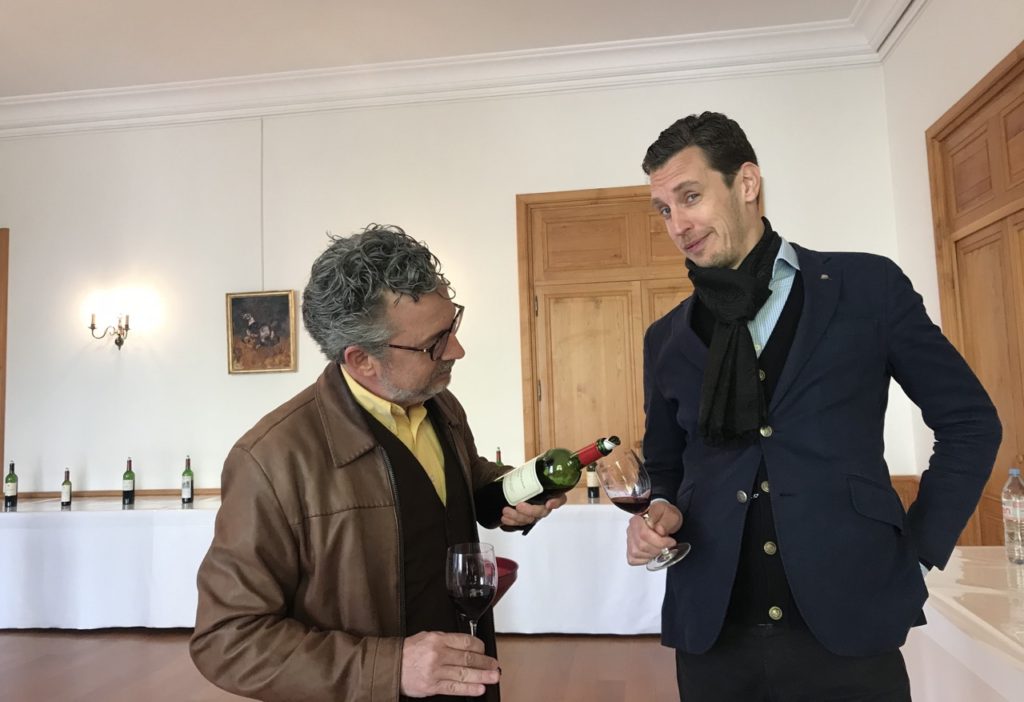
Both photographer and blogger Miguel Lecuona (left) and Bordeaux negociant Francis Anson also were mighty pleased with Trotanoy 2017 ?
Château Trotanoy – The very best of all the Pomerols tasted at the Moueix offices in Libourne. Herbal with cool fruit: conjuring images of the film Cool Hand Luke. Such gorgeous freshness from clay-driven cool soils. The palate has energy and strength – a kind of “quiet power” and not so “armored” an expression as last year, but certainly fulfills the cliché of the iron fist in the velvet glove. The 2016 was more like the iron glove over a velvet fist … I almost prefer the 2017 to the 2016, although the 2016 will outlast the 2017 to be sure. No denying however that 2017 Trotanoy is not just charming; it has much density. Going back to it, after assessing the wonderful Château Belair-Monange of Saint Emilion and also part of the Moueix group of wines, the Trotanoy was almost “too much” by comparison… But then your palate adjusts and you realize: What an awesome Pomerol! 94-96
Vieux Château Certan – One of the most successful wines of the vintage, exuding lovely violet and iris aromatics along with ripe blackberry fruit and rich blueberry, a lovely mix of cool and ripe fruit. Many writers are extolling its virtues, and so do I. It has the energy of the 2014, but with a bit more sumptuousness. One cannot deny its silky texture and breed, and long finish. The blend includes 81% Merlot, 14% Cabernet Franc and 5% Cabernet Sauvignon – and these Cabernets lend structure and finesse, as they are gorgeously ripe. The somewhat high pH at 3.75 and 14.2% alcohol never overwhelms you, as the wine comes across oh so balanced. I do recall enjoying the verve of 2014 perhaps a bit more, but this beats 2014 with greater dry extract and – as the French say – matière. Yields were normal at 37 hectoliters per hectare, as the frost did not affect this property one bit. 94-96+
Château Vieux Maillet – This is certainly rich and zesty, but it seems to lack the depth of the Clos de Clocher, for example, tasted just before. At the negociant Joanne, I got more oak: “The finish annoys me: far too oak driven! The attack is OK, and there is fruit. But what the heck?” Not sure, so let us be a bit conservative for now and wait for a final verdict from bottle… 87-89
Château Vray Croix de Gay – This is a bit edgy and awkward. Not as smooth as Rouget, which already has some issues with edgy tannin … 86-88
Château Vieux Maillet – A bit green on the nose. Yet the palate is smooth, and appealing. There is a certain polish to this wine that appeals, even if it is not super ripe or very long. It is, in a word OK. 87-89
Château La Violette – This is opulent and with palate density, but I do get a sense of drying tannin, as well, on the finish. The attack is floral and juicy, however, leading to an opulent mid palate. I am not sure that the price of admission is worth the contents of the bottle, although it is a very nice wine for the vintage. 91-93
 Wine Chronicles
Wine Chronicles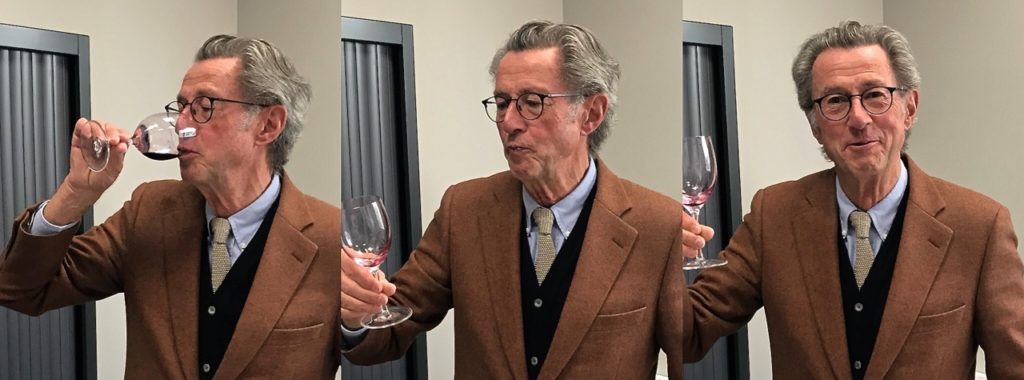
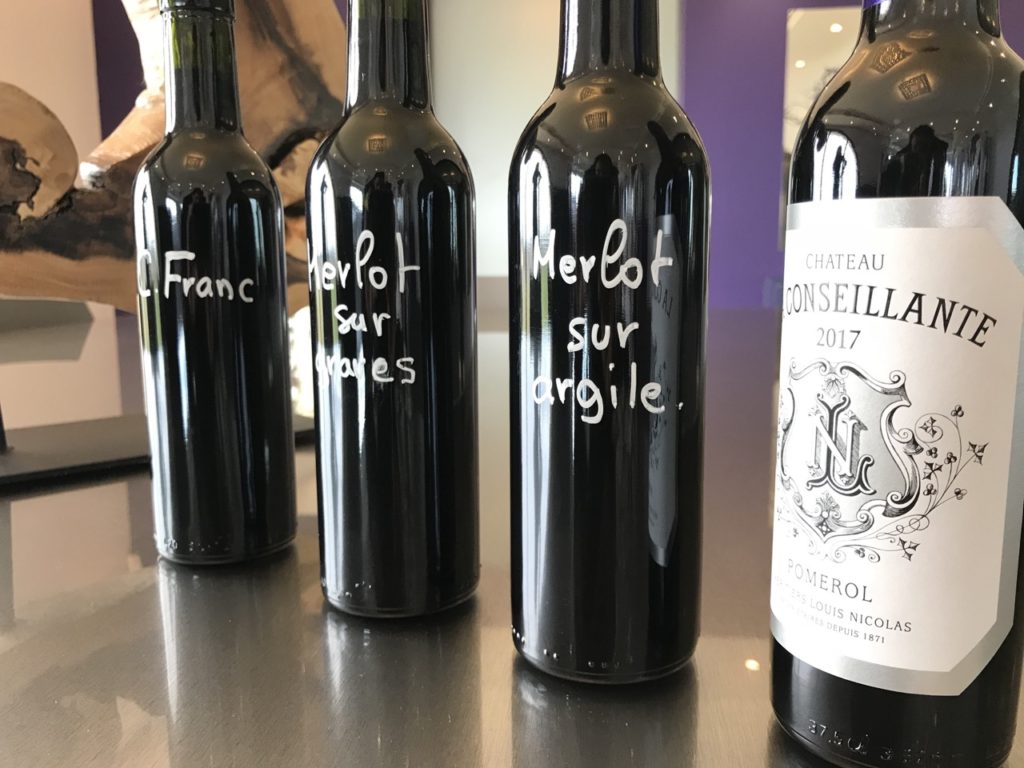
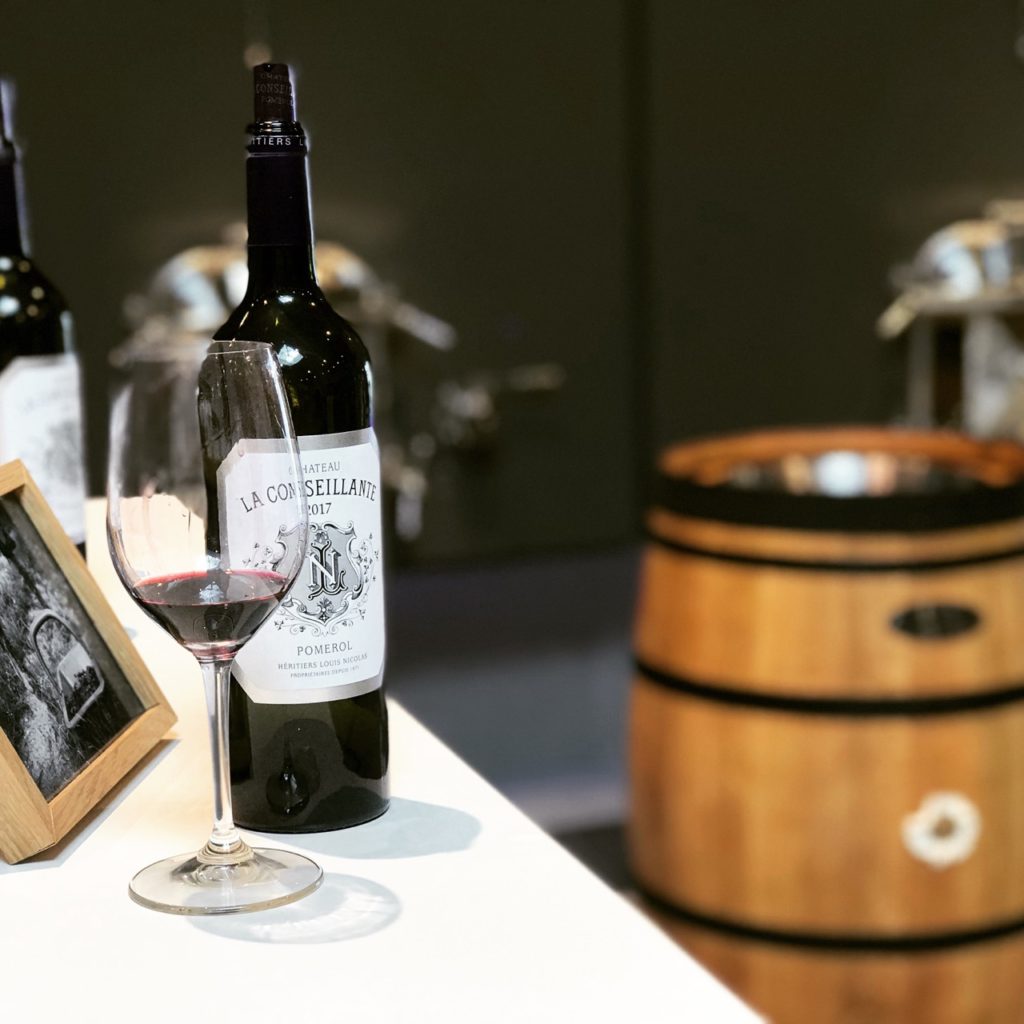
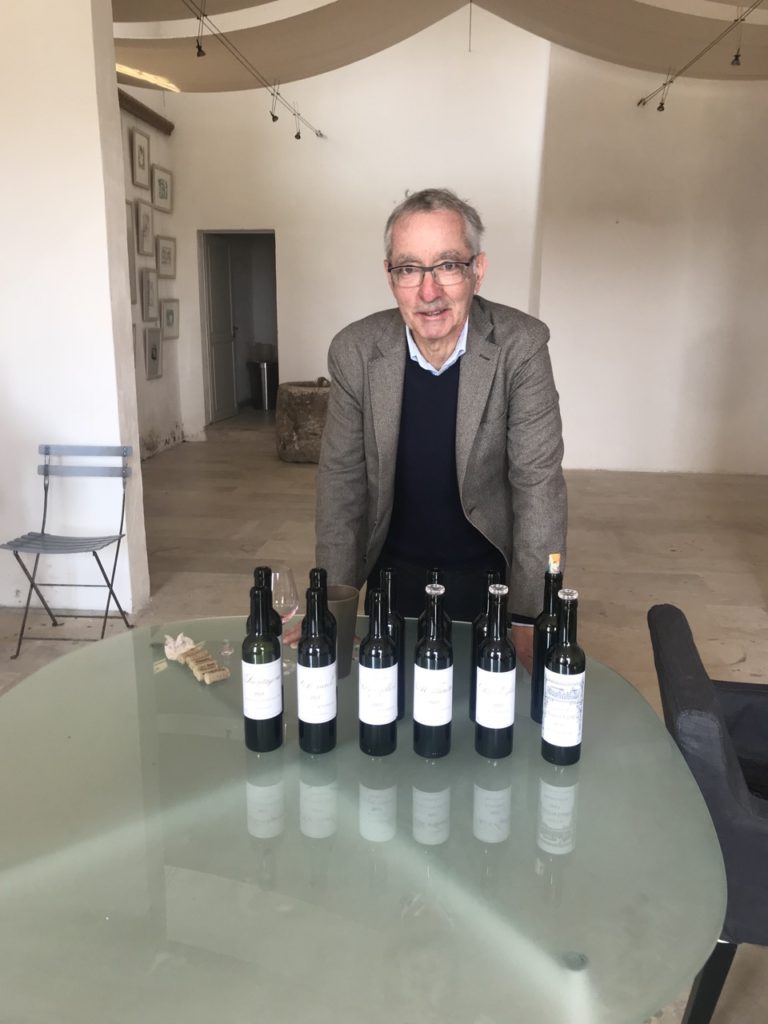
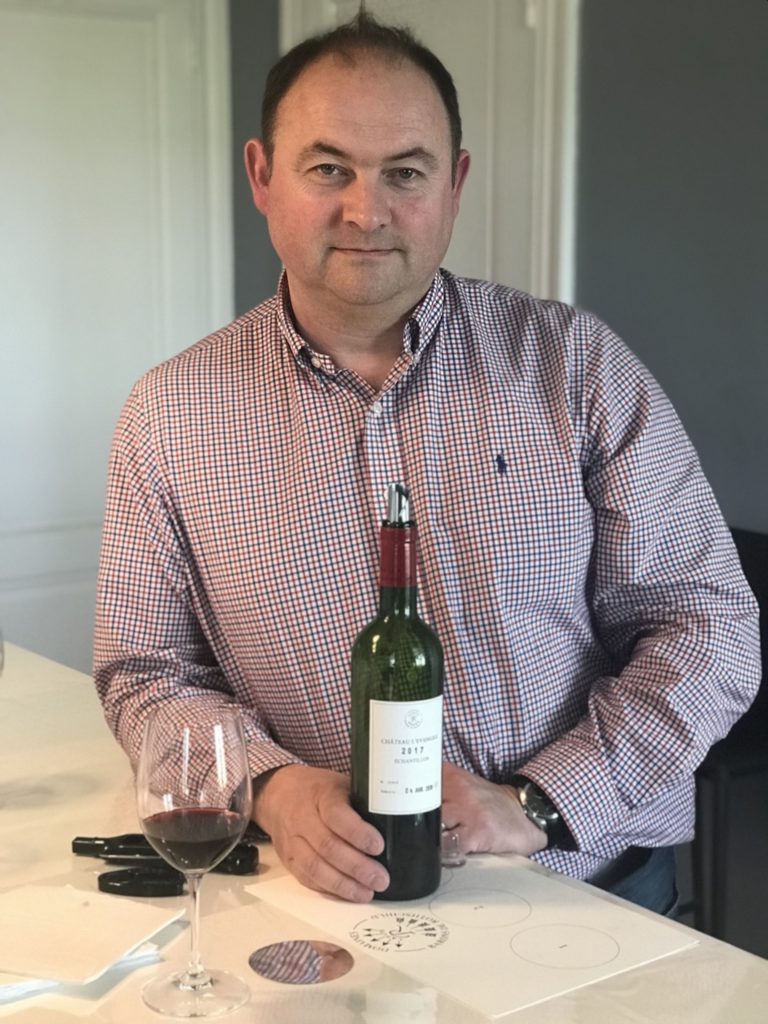
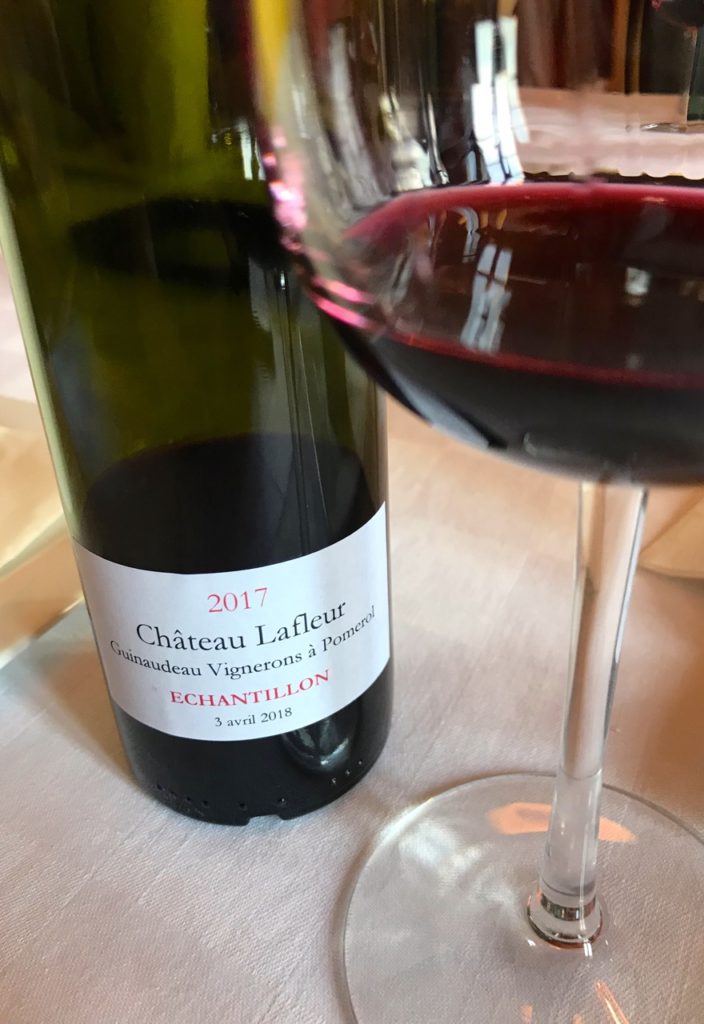
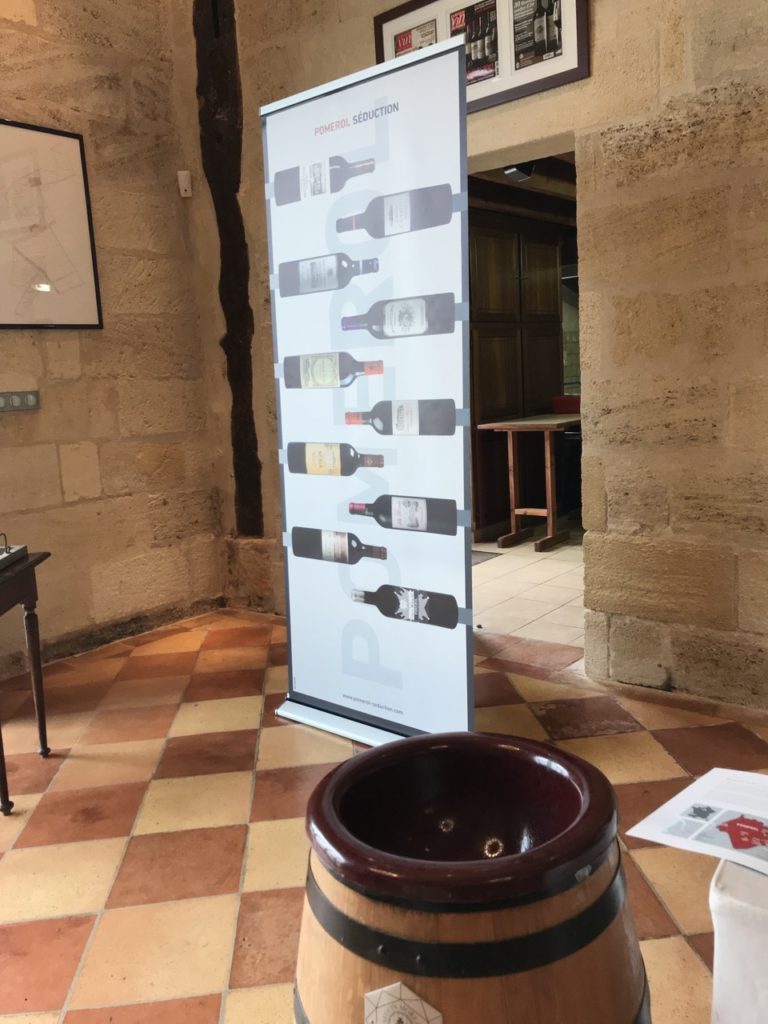
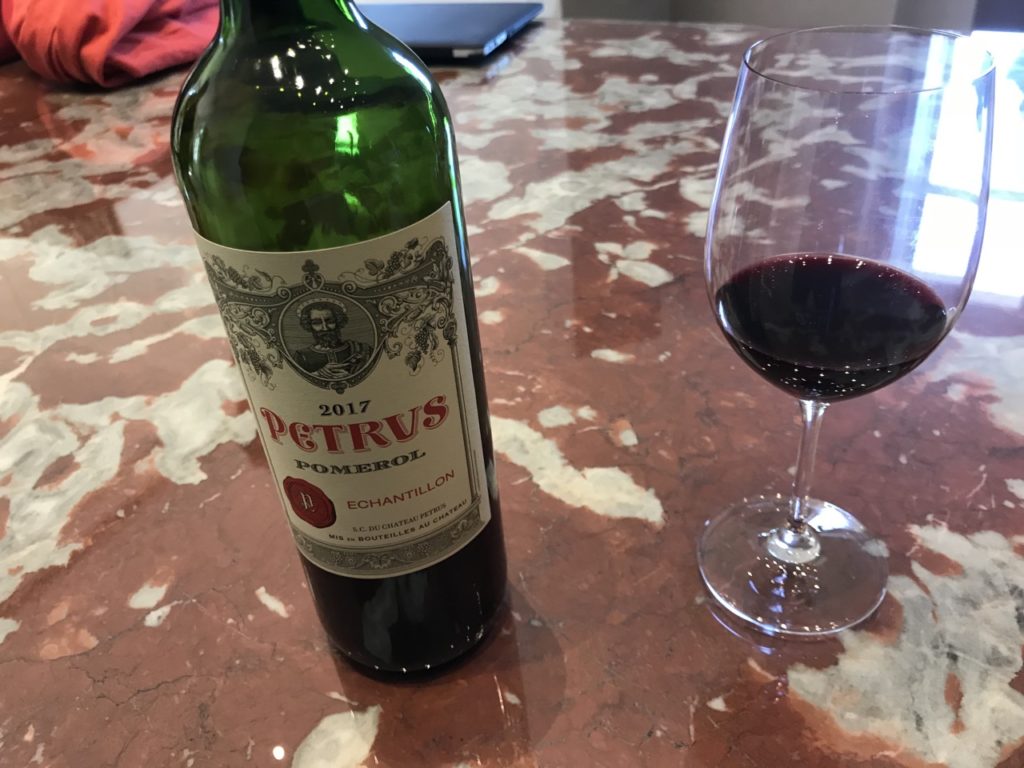
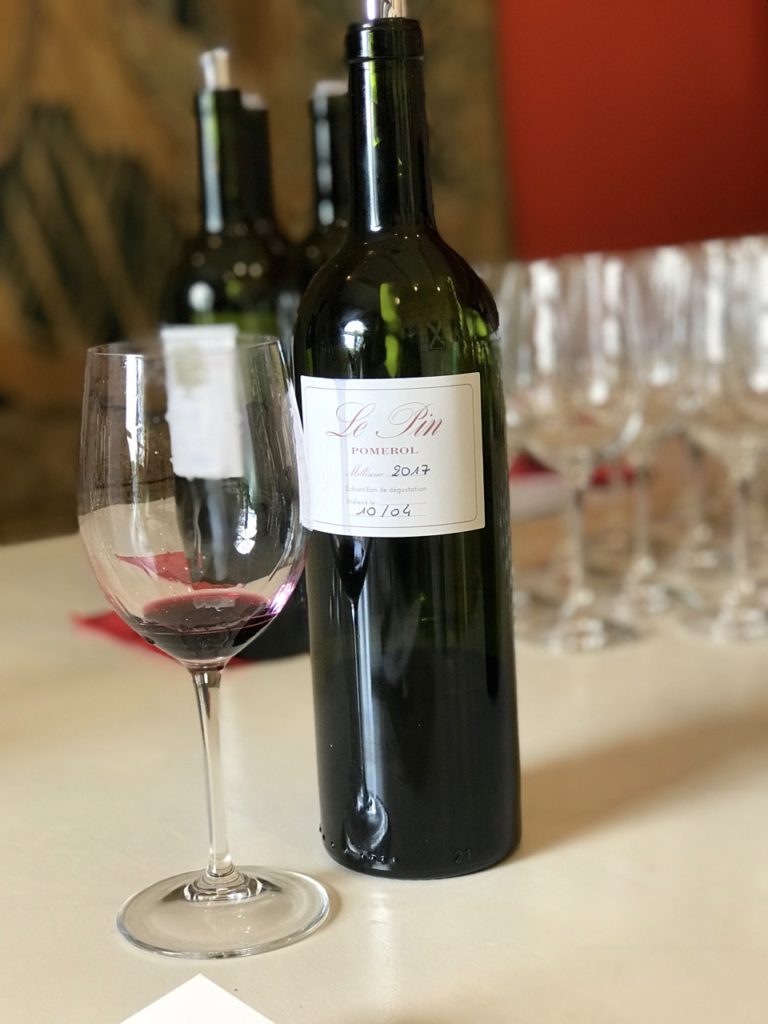
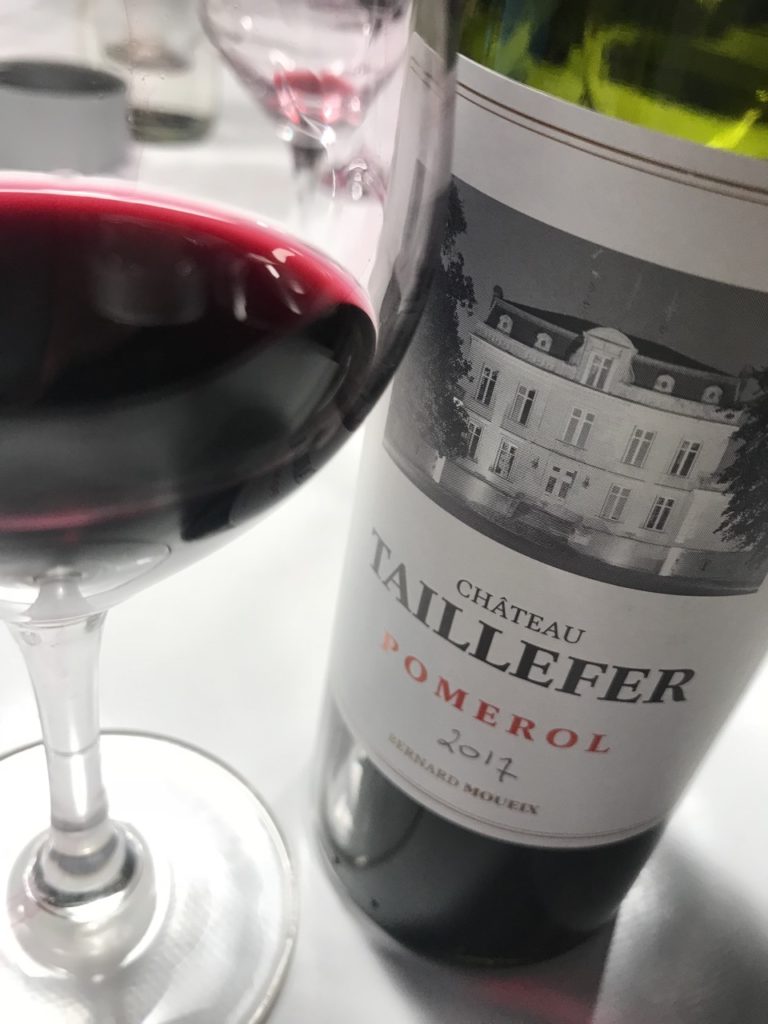
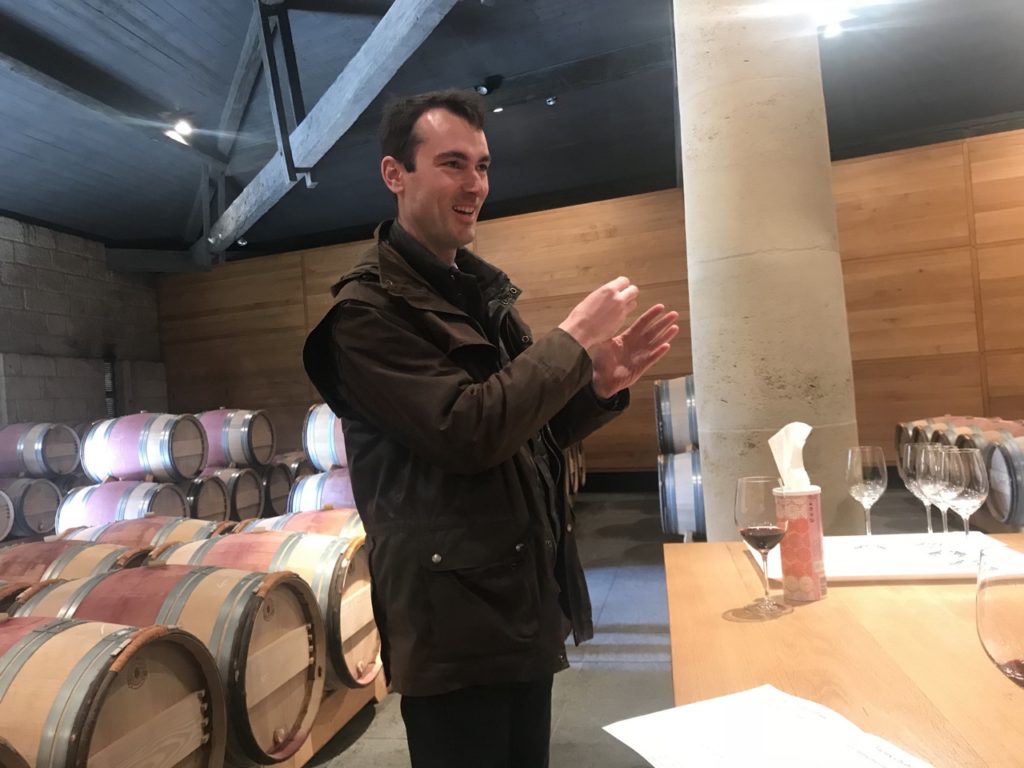
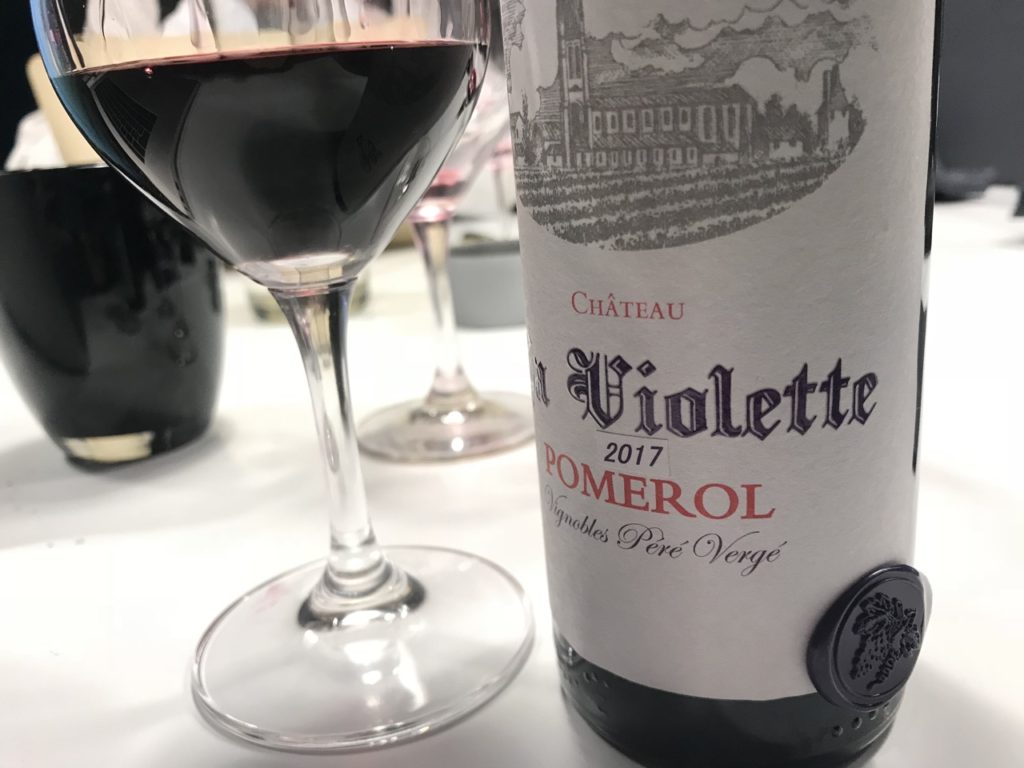

Petit Village?? Was presented at Hangar !4!
Odd! I didn’t get it… Oh well: will try later this year.